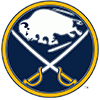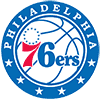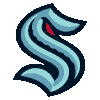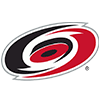I simply have to say "wow" after the messages and comments I received regarding last week's Notebook on keeper draft strategies, and some pitchers I would consider targeting going into the 2013 draft. Given the response, I thought I would use this Notebook to expand a bit, both on strategy, and by listing a few more arms to consider as you build your cheat sheets this winter. It's obviously a great result when you win your league in any given season, but it's also very rewarding to build for the future while you're winning. It sounds like a contradiction, but trust me, you can do both. Amazing as it may seem, the strategy that puts stars of the future on your roster, has also been a critical component of winning this year. Let's get started:
Keeper Strategy Checklist:
Value Comes First - Always keep value in the forefront of your strategy planning. Your objective is to build a $260 roster in March that will have a draft value of far more going into the next season. As an exercise, jot down the players and their salaries on your roster now, and estimate their selling price next spring. In most cases, the bigger the difference, the better you did in the standings this year - assuming the difference is to the plus side of course. Justin Verlander may be worth $30 next spring, but unless his value at the end of next year is considerably higher than $30, he is
I simply have to say "wow" after the messages and comments I received regarding last week's Notebook on keeper draft strategies, and some pitchers I would consider targeting going into the 2013 draft. Given the response, I thought I would use this Notebook to expand a bit, both on strategy, and by listing a few more arms to consider as you build your cheat sheets this winter. It's obviously a great result when you win your league in any given season, but it's also very rewarding to build for the future while you're winning. It sounds like a contradiction, but trust me, you can do both. Amazing as it may seem, the strategy that puts stars of the future on your roster, has also been a critical component of winning this year. Let's get started:
Keeper Strategy Checklist:
Value Comes First - Always keep value in the forefront of your strategy planning. Your objective is to build a $260 roster in March that will have a draft value of far more going into the next season. As an exercise, jot down the players and their salaries on your roster now, and estimate their selling price next spring. In most cases, the bigger the difference, the better you did in the standings this year - assuming the difference is to the plus side of course. Justin Verlander may be worth $30 next spring, but unless his value at the end of next year is considerably higher than $30, he is not going to be a particularly high value pick. Without question you will probably need at least a couple of base value guys on your roster to compete, but be sure to keep your focus on guys who you firmly believe will appreciate in value. First of all, that means they are outperforming the dollars you have invested - helps you compete now - and their value is going up which gives them additional value which I'll cover later.
Always Take Upside - This is the famous, or maybe it's infamous, Bogfella Rule. I state it often, but once more can't hurt. There have been a lot of people who think this is a risky element to overall strategic planning for fantasy baseball, but it has served me exceptionally well over nearly 25 years in the game. Basically it means, when deciding between two players, all things generally equal, I always take the player with upside over the more established ability. In more harsh terms, take someone who could do better over someone I would label "proven mediocrity" when forced to choose. In some fantasy circles, "upside" and worse yet, "potential" can be deemed dirty words, primarily because they often describe a player who struggles at times. There is risk, no questioning that, but I gladly accept the risk rather than fill my roster with "safer" options that are likely to give me a ho-hum standing somewhere in the middle of the pack. Have no fear - ok, have a little fear - but be assured, as you get better at this, the true upside player becomes more evident, and false potential is easier to spot.
Quality, Not Quantity - Making it to the major leagues is a huge long shot, and making an impact at a level that would help a fantasy team is even less likely to happen. Every year, literally hundreds of "prospects" will be discussed, and many of them end up on fantasy rosters where they hurt as much or more than they help. You can't fill your roster with prospects who won't contribute either in statistics or value. You have to look for quality, not quantity when targeting players you believe will be a boon for your team. If you have been doing this for a long time, you might already have the feel for sorting through the preseason lists and narrowing it down to a handful of guys you want. If you are newer to the game, find a few analysts you can trust, and rely on them to help wade through the never ending list of "can't miss" prospects. Each year I have a list of two or three must have players (and even those can fall off the list if the investment doesn't figure to provide that all important value), and a longer list of guys I would like to have if the chips fall my way. You can't get them all, and collecting 20 to have one pan out is not a high enough average to make the strategy work. Be relentless, but stay focused.
Stockpile High Ceiling Talent - Now I am going to make a statement that seems to be the opposite of what I just said in the Quality, Not Quantity segment. Actually this refers to value as much as potential, although a combination of both is the ideal. As promised, this is where winning now while building a great long term team comes into play. The most marketable commodity in keeper league fantasy is the player with high value, a cheap contract, and at least the perception of additional upside. When teams fall out of contention, they will look to unload their expensive or expiring contracts, and if you have the most extensive list of cheap guys rising in value, you are going to be the first person they talk to. It's difficult to do, and I certainly encourage you to have a couple of guys with that untouchable tag, but go ahead and deal your surplus of high ceiling kids for that veteran star or two who can get you over the top now. If you are like me, you probably don't have the protection spots to keep them all anyway. The tricky part is deciding who can go, who can't. Keep the value equation in mind here. Which guy(s) will have the highest value differential next year, and beyond? Those are the ones to keep.
Timing Can Make a Huge Difference - This is perhaps the most difficult aspect of pipeline planning for fantasy baseball. Maximizing value equates to acquiring a player when they are virtually unknown. Once the hype machine gets rolling, value tends to evaporate and a guy you really want is no longer a viable candidate. However, on the flip side, acquiring a guy too early uses up valuable roster space for extended periods of time, and effectively reduces the length of time you can reap benefits from your find. I'll be honest here, I am notoriously too early on the really blue chip guys. Always afraid they will be "discovered," I acquire them too soon and end up losing as much as a year of their really useful performance. I won't dwell on this point too long, but as a general rule, when possible, you want to acquire a pitcher in the spring of the year when you believe he will arrive in the major leagues. Know your organizations, and their tendencies with handling and promoting young arms, and know the other owners in your league - are they hard core like you? Is your guy likely to already be on their radar?
Patience, Grasshopper - You can be too impatient, and you can be too patient, but it's usually harder to be the latter. If you want to play the pipeline, you will have to be more patient than most; that I can promise. Dealing with young pitchers automatically means you will have stretches where everything seems to be heading south, including your place in the standings. However, there are very few things as frustrating to a pipe-liner as giving up on a guy too soon. If you have a good eye for talent, the less than anticipated performances won't be too frequent, and they won't usually be that bad, but some people play the game from day-to-day, and a bad outing finds that pitcher on the trading block the next day. Conviction is what this is all about. Once you have a guy on your list, you have to have faith he will reward you sooner rather than later. That doesn't mean you should stop evaluating, things can change, and there will be pitchers you decide aren't progressing or that their situation has changed and diminished their potential value. If that happens unload them to be sure. But, as a guideline, the higher the ceiling, the more patience you should be willing to invest. Don't let short term frustrations disrupt your long term plan.
A Few More Potential Targets for the 2013 Draft - or Filling the Pipeline, Part II:
Contracts expire, and you have to keep the pipeline full. There are many to consider, but below is a list of a few more pitchers I will be scrutinizing this winter, and on draft day next spring, hoping to find the guys that I will count on in the future while they can still be obtained at high value prices. Remember, you can review the Part I list by clicking on "All Articles in the Column" at the top right of this page.
Adam Wainwright - One of my favorite places to shop for value is the veterans list of pitchers returning from a major injury, and if I don't get them early, I will sometimes target them as they struggle to shake off the rust of a year without competitive innings. Wainwright was arguably one of the top 10 pitchers before surgery, he started off slowly this year, but his second half suggests he is coming back to form. The window is closing, and depending on your league, there may be others willing to invest heavily on him.
Daniel Hudson - Tommy John surgery will cost him the first half of 2013, and that should be enough to drive his price tag into the value range. Hudson was on his way to being a top tier pitcher before the injury derailed him, and if you can get him at a big discount, he should be worthy of a spot on your roster for a few years to come. Arizona is loaded with young pitching talent, and that can be a big plus for all the pitchers involved. It's hard to carry someone who won't pitch for a few months, but he's young enough to warrant considerable patience.
Jarrod Parker - He also comes back in the rounding into form category, but his injury happened before he was as established as someone like Wainwright. He pitched reasonably well this year, especially at home in his cavernous home park, but his walk rate was still a bit high, and his strikeout rate was down a bit. Many owners have downgraded him, but he still has top-of-the-rotation potential. Grab him before his name re-circulates as a high ceiling possibility.
Marco Estrada - There is no overpowering stuff here, and he doesn't really feature an unorthodox delivery, but he does offer a lot of movement, and the ability to throw any pitch at any times for strikes. He gets hurt by home runs when he does get too much of the plate, but he limits base runners and therefore minimizes the damage. Because he is not a huge power arm, he will often be overlooked and might help you fill out your rotation with a very inexpensive match-up starter.
J.A. Happ - Remember when I said become familiar with the various organizations? Toronto GM Alex Anthopoulos has a reputation for finding somewhat forgotten or misplaced talent, and his management team then makes that pitcher useful. They got Happ from Houston, and while he doesn't have a huge ceiling, he is a $1 pitcher who could provide quite a bit more than that in numbers. He didn't pitch long for Toronto before his season ended with an injury, so he should come very cheap next spring.
Matt Harvey - This is one I waited too long to grab. I was reasonably sure he would join the Mets this season, but I put off claiming him, and when he did come up, and pitched very well, someone with a higher waiver spot pulled him out from under me. If he is in your draft pool next spring, you can hope Zack Wheeler gets more attention, but Harvey has probably pitched too well to go for a very low price. He has not received quite the hype of Wheeler, but he drives his price higher with every solid outing.
Next Week:
The annual Bogfella Watch List! I'll provide my list of elite pitching prospects you should be monitoring as they get closer to contributing at the major league level. Many of these arms will be the arms that qualify for pipeline consideration, so don't miss it.
Is there a pitcher you would like to see discussed in an upcoming Notebook? Throw the name out, and I'll see what I can do. In fact, I would like to remind readers to check back often as each week's Notebook will feature updates in the comments section on evolving mound situations. And, as always, keep in mind this is an interactive forum, so your comments are always appreciated. I will respond to any comments or questions as soon as possible. Thanks!
For up to the minute updates on all things pitching, be sure to follow @bogfella on Twitter! Get your pitching questions answered, and my take on all the mound related happenings!






















